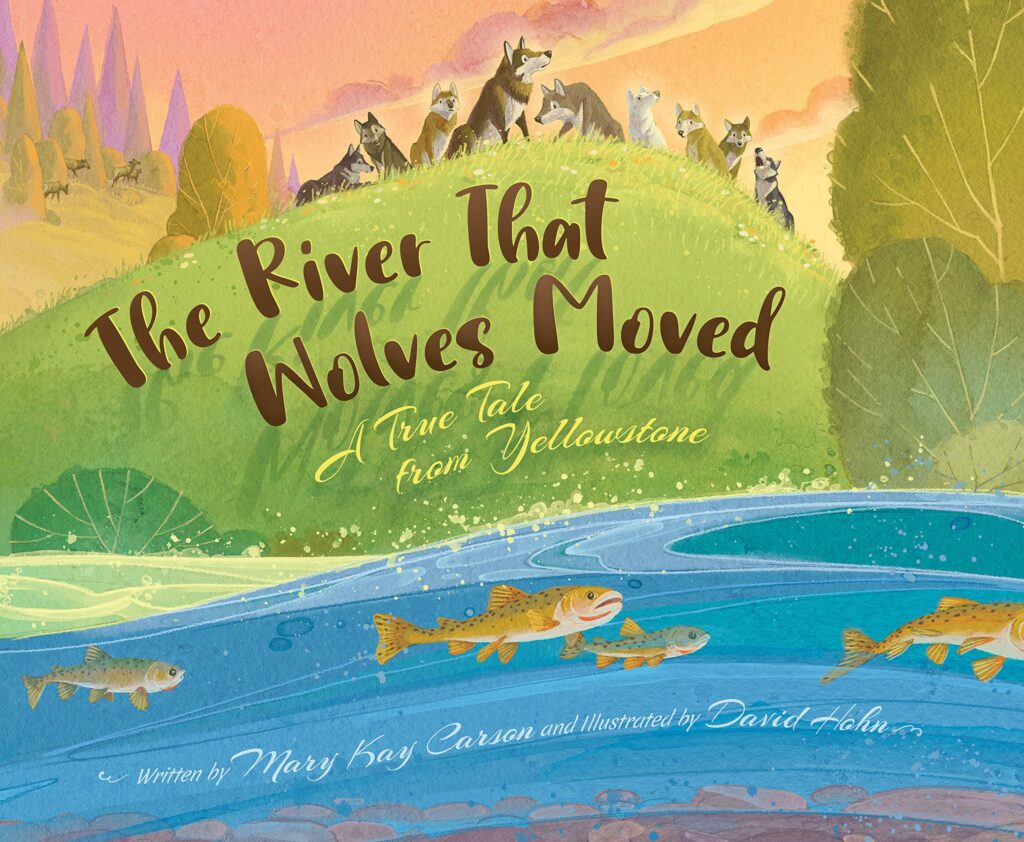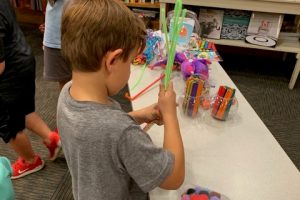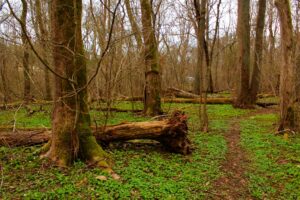GUEST BLOGGER MARY KAY CARSON
The River That Wolves Moved tells the true tale of how re-wilding gray wolves into Yellowstone National Park started a chain of ecosystem changes so profound that the landscape itself, including rivers, was transformed.
Can wolves really move rivers?
Wolves don’t pick up rivers and move them. But in response to being preyed upon, elk move away from the rivers’ edges to seek safer, more open feeding grounds. This leaves willows and other plants along rivers to regrow and strengthen riverbanks, reducing erosion and restoring natural riverine meanders. A whole host of other wildlife also benefits from healthier river ecosystems—beavers and songbirds, amphibians and fish.
Scientists call the chain of changes activated by an ecosystem’s top predator a trophic cascade. It’s the real-life magic of predator power! Using a House-That-Jack-Built style chain tale to tell Yellowstone’s wolves’ chain of changes story seemed a perfect fit when writing The River That Wolves Moved.
A chain tale
Students are likely familiar with other so-called cumulative or chain tales. Here are few famous ones that like The River That Wolves Moved employ similar structures with cumulative, repeating phrases to tell an ever-growing chain of events: This Is the House That Jack Built, There Was an Old Woman Who Swallowed a Fly, The Twelve Days of Christmas, Old MacDonald Had a Farm, and evenDr. Seuss’s Green Eggs and Ham.
Pre-writing activity
- Begin with a classroom discussion. Ask students to name examples of cumulative or chain tales and check for understanding. Be prepared to share examples. (Wikipedia is a great source.) What features do chain tales have in common? How do they work?
- Hand out copies of the House That Jack Built. Invite students to color code the repeated nouns. For example, underline each use of house in red, malt in blue, rat in green, cat in orange, etc. This will help students follow the chain of words throughout and notice the repeating structure.
- Read The River That Wolves Moved aloud. Then ask students to re-read the book independently (or in groups), paying attention to the bold words in the main text.
- Ask them to generate a list of the nine words. [river, pack, elk, willows, bank, water, fish, child, wolves]
- Use this list to further discuss how a chain tale grows by adding additional elements and continuing to repeat them. Note how the final stanza in the book (see below [image4]) uses all nine words.
Activity: Write a chain tale
Once students have a handle on what cumulative folktales and chain tales are, challenge them to write one of their own. Invite students to share their tales with the class, encouraging the audience to chime in on the repeating phrases.
Mary Kay Carson is an author of nonfiction books for young people. Her books have received more than a dozen starred reviews, as well as multiple awards, including the 2019 AAAS/Subaru SB&F Prize for Excellence in Science Books for Alexander Graham Bell for Kids. She’s written six titles in Clarion’s acclaimed Scientists in the Field series and is a member of STEM Tuesday. Find out more at www.MaryKayCarson.com or follow her on Twitter, Facebook, and Instagram: @MaryKayCarson













Leave a Reply
Your email is safe with me.